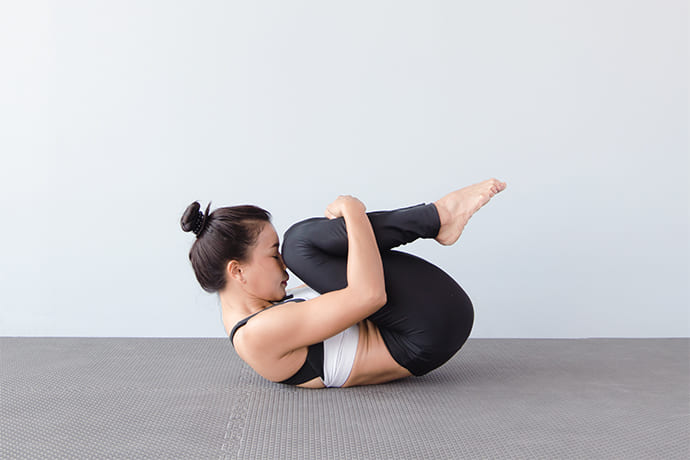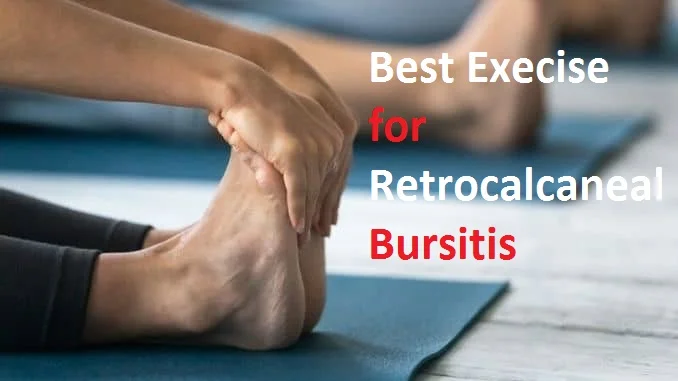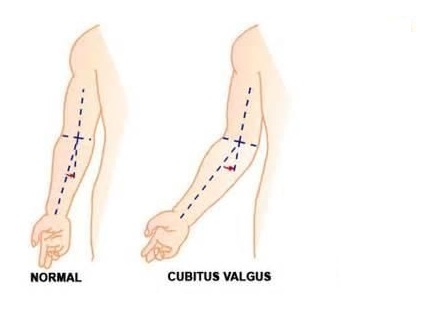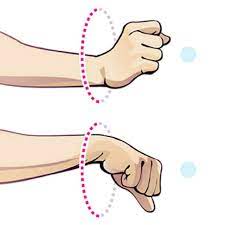Lower back muscles stretching exercise
Table of Contents
Introduction:
- The low back is the area of the back that is located between your lowest rib and the upper part of the buttock. This area supports much of the weight of the upper body. Lower stretches are an exercise that reduces stiffness and increases long-term flexibility.
- Stretching of the lower back can activate muscle area and improves blood flow in that area.
- Lower back stretches also help in recovering from lower back pain.
- Lower back pain is a fairly common health problem nowadays, as so many things can cause it. In some cases, it might be a symptom of other underlying conditions, like kidney stones or acute pancreatitis. Other times, it’s simply a side effect of a sedentary lifestyle or repetitive motions of the lower back. Low back pain can be a constant dull ache or a sudden sharp pain. Low back pain can range from mild, dull, severe, and disabling pain in the lower back.
- pain in the lower back can decrease mobility and interfere with normal functioning. Low back pain can be acute(lasting from days up to six weeks) or chronic(lasting longer than three months to years). Lower back pain can affect your activities of daily living and decrease your quality of life if it is not treated properly. In some cases, pain may radiate into one or both buttocks or even into the thigh or lower keg area.
Benefits of low back muscle stretch:
There are a few benefits you can get after stretching back muscles. Such as :
- Frequently stretching the muscles, tendons, and ligaments that support the spine is an important element of all back exercise programs.
- Stretches may also help strengthen the muscles in your lower back. This will help you to go about your daily activities with easiness.
- Stretching can correct posture-Tight muscles can cause bad posture. Especially, the muscles of the chest, back (both lower and upper), and hips can cause bad posture if they are tight. We can correct this bad posture to a good one by stretching the lower back muscles.
- Stretching can increase the range of movement and prevents loss of range of movement.
- Stretching can reduce low back pain.
- Stretching can help to reduce the risk of injury -Stretching before any performance or sports or training specifically helps prevent injury by moving blood flow to the muscles, warming them up, and reducing muscle tightness they might help to prevent the risk of strain or a tear.
- Stretching can reduce muscle soreness.
- Stretching can improve flexibility and mobility.
- Reduces muscle tightness.
Different types of lower back stretching:
There are many types of stretches for lower back muscles. Some are below:
- Child’s Pose
- Knee-to-chest stretch
- Piriformis stretch
- Seated spinal twist
- Supine twist
- Pelvic tilt
- Cat-Cow pose
- Sphinx/cobra stretch
- Trunk rotation
- Seat forward bend
- Flexion rotation
- Supported bridge
- Belly flops
- Hip circles
- Reclining single-leg stretch
- Legs-Up-the-Wall
- Thread the Needle
- Latissimus dorsi stretch
- Bridge
- Foam rolling
- Weighted hamstring stretch
- Standing chest stretch
- Seated spinal stretch
- Bird-Dog pose
- Poodle tail lower back stretch
- Open Book Stretch
Child’s Pose:
How to do:
- Start on all fours with the hands directly under the shoulders and the knees just wider than the hips.
- Slowly sit back on the legs while stretching out forward with the arms. Place the forehead gently on the ground.
- Focus on breathing deeply and relaxing any areas of stress or tightness.
- Hold this pose for 20 seconds to 1 minute.
- If you feel like you need some extra support, you can place a towel on top of or underneath your thighs.
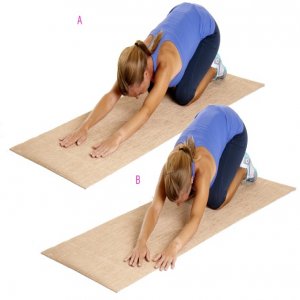
Knee-to-chest stretch:
How to do:
- Lie on your straight back with both knees bent and your feet flat on the floor.
- Keep your left knee extended it straight out on the floor.
- Draw your right knee towards your chest, clasping your hands at the top of your shinbone.
- Lengthen your spine all the way down to your tailbone, and avoid raising your hips.
- Breathe deeply, releasing any tension.
- Hold this pose for up to 60 seconds.
- Repeat with the other leg.
- For more stretch, tuck your chin into your chest and lift your head up.
Piriformis stretch:
How to do:
- Lie on your back with both knees bent and your feet resting flat on the floor.
- Place your right ankle at your left thigh.
- Then, clasp your hands behind your left thigh and pull up toward your chest until you feel a stretch.
- Hold this position for 30 seconds.
- Then do the opposite side.
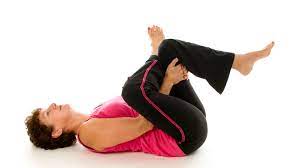
Seated spinal twist:
How to do:
- Sit on the mat with both legs extended in front of you.
- Bend your right knee and take the right leg up to the left thigh so the right foot comes near the left knee.
- Bend your left knee and position your left ankle near your right buttock.
- Reach your right hand behind you for support.
- Place your left arm just over your right knee.
- Exhale and turn your spine to the right side.
- Hold this pose for 20 to 1 minute.
- To feel an extra stretch, add neck rotations during this position by inhaling to look forward when you inhale and exhaling to turn your stare backward when you exhale.
- Perform 5 to 10 on each side.

Supine twist:
How to do:
- Lie on the back with the arms out to the sides with palms facing down to create a T position.
- Lift the left knee toward and place the left foot on the right knee.
- Drop the left knee over to the right side of your body and twist the spine.
- Keeping the palms and shoulders flat on the ground. Let gravity pull the knees down.
- Hold this position for 15-30 seconds before doing it to the other side.
- Repeat several times on each side.
Pelvic tilt:
How to do:
- Lie on your back with both knees bent and feet resting flat on the floor.
- Flatten your back against the ground by tightening your abdominal muscles and bending your pelvis up slightly.
- Breathe normally, holding this position for up to 10 seconds to 15 seconds.
- Relax and take a few deep breaths.
- Do 1 to 3 sets of 4 to 5 repetitions.

Cat-Cow stretch:
How to do:
- Come onto all fours in a table pose (hands and knees on the ground with a neutral spine).
- Press into your hands and feet as you inhale to bring your head up, allowing your belly to fill with air.
- Exhale, tucking your chin into your chest, arching your spine toward the ceiling, and bringing your head and pelvis down.
- Continue this pattern of movement, with each breath.
- Do this for 1 to 2 minutes.
- For deeper holds, simply remain in each position for 10 to 20 seconds at a time instead of moving with each breath.

Sphinx/cobra stretch:
How to do:
- Lie in a prone position with your elbows just beneath your shoulders and your hands placed in front, palms facing downward.
- Place your feet slightly apart. It’s OK if your big toes are touching each other.
- Gently inhale and lift your head and chest off the floor.
- Press your pelvis into the ground.
- Look straight or slowly close your eyes.
- Hold this pose for 30 seconds.
- To release exhale as you slowly lower your chest and forehead to the mat.
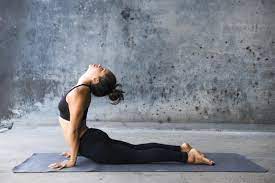
Trunk rotation:
How to do:
- Lie in a supine position and bend your knees up toward your chest so your body is positioned as if you’re sitting in a chair.
- Fully extend your arms out to the sides, with your palms facing down on the floor.
- Maintaining your knees together and hands on the floor, gently turn both bent knees over to your left side and hold for 10–20 seconds.
- Return to the beginning position and repeat to turn on your right side, again holding for 10–20 seconds.
- Repeat 8–10 times on each side.
Seat forward bend:
How to do:
- Sit on the floor with your legs straight in front of you.
- Hook a standard bath towel around the sole of your feet at the heels.
- Carefully bend forward at your hips, placing your belly down to your thighs.
- Maintaining your back straight, grab the towel to help you take your belly closer to your legs.
- Stretch until you feel the stress in the back of your legs and lower back.
- Hold for 15-30 seconds, rest for 20-30 seconds, and repeat 4-5 times.
- You can increase or decrease the level of this stretch by grasping the towel closer or farther from your feet.
Flexion rotation:
How to do:
- Lie on your right side with both legs straight.
- Bend your left leg, clasping your foot behind your right knee.
- Place your left knee with your right arm.
- Place your left hand at the back of your neck.
- Gently rotate your upper body backward by touching your left shoulder to the ground. You should feel a
- stretch in your lower back.
- Repeat the rotation stretch 8-10 times,
- Hold each stretch for 5-10 seconds before gently moving out of the rotation.
- Repeat the steps on your left side.
Supported bridge:
How to do:
- Lie in a supine position with your knees bent and feet resting flat on the ground.
- Elevate your hips and place a foam roller or firm cushion underneath them.
- Fully relax your body, and support your buttocks and hips with the foam roller or firm cushion.
- Hold for 20–60 seconds and repeat 4–5 times, resting 20–60 seconds between sets.
- You can feel some additional stretch in your lower back by extending one or both legs from their bent position.
Belly flops:
How to do:
- Roll up a towel or blanket lengthwise and place it horizontally in front of you.
- Lie front-side down(on your stomach) over the towel or blanket so that your hip bones are compressing into it.
- Fully relax your body. You can rotate your head to one side.
- Stay in this position for 1–2 minutes and repeat 2–3 times, resting 30-40 seconds between sets.
Hip circles:
How to do:
- Stand straight with your feet apart and both hands rest on your hips.
- Start by gently moving your legs from side to side.
- Then slowly rotate your hips to one side, making big circles.
- Perform at least 8-10 circles.
- Repeat in the other direction.
Reclining single-leg stretch:
How to do:
- Lie on your back with both legs straight.
- Raise your left leg to the ceiling so it’s as straight as possible, keeping a slight flex in the knee.
- You can bend your right knee and place your foot on the ground for support.
- Hold your left leg behind your thigh through the fingers, or use a towel around the sole of your foot.
- Hold this single-leg stretch for 15-30 seconds.
- Repeat on the right side.
- perform 2 to 4 times on each side.
Legs-Up-the-Wall:
How to do:
- Sit with the left side of your body against a wall.
- Lie in your back position and swing your legs upward along the wall. You may put a small pillow under your hips or Draw your hips a few inches from the wall.
- Rest your arms in a comfortable position.
- Focus on relaxing the lower back and releasing stress.
- Pause in this pose for up to 2-3 minutes.
Thread the Needle:
How to do:
- Begin on hands and knees, with the knees directly below the hips and the feet in line with the knees.
- Keep the hips, knees, and feet in a stable position, and move the hands out in front until they are underneath the shoulders.
- Keep the arms extended, so that a slight stretch is felt down the sides.
- Take the left arm and pass it underneath the right arm while turning the chest.
- The left hand should rest on the floor, palm facing the ceiling.
- Try to lower the left shoulder as far as possible, while slowly placing the left side of the head onto the floor. Look past the underarm, toward the ceiling.
- Hold this pose for 20–30 seconds.
- Push upward, using the left arm to slowly return to the starting position. Afterward, repeat the stretch using the right arm.
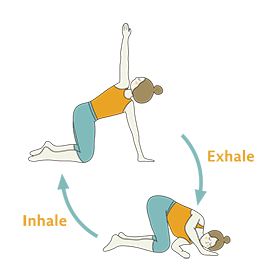
Latissimus dorsi stretch:
How to do:
- You can perform it in a standing or sitting position, raising the left hand straight up, over the head.
- Bend the elbow, so that the left-hand falls toward the upper back.
- Lay the right hand on the left elbow and gently pull the left arm to the right.
- While pulling the left elbow, bend the body in a straight line to the right, and ensure not to lean forward or backward.
- Hold this stretch for 20–30 seconds, then do it on the other side.
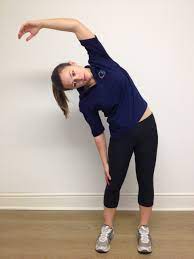
Bridge:
How to do:
- Lie on your back with your knees bent.
- The feet should rest flat on the floor, pulled in as close as possible to the hips, and the hands should be your either side.
- Squeezing the buttocks, lift the pelvis towards the ceiling, while rolling the upper body upward until the back is off the floor.
- The body’s weight is now balanced by the shoulders.
- Hold this bridging position for 5-10 seconds and continue to focus on squeezing the buttocks.
- Gently lower the upper body, slowly letting each vertebra touch the floor until the back is flat again.
- Repeat 8-10 times per set, and gradually increase up to 3 sets.
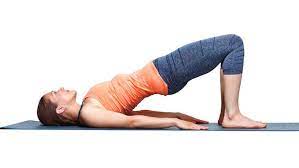
Foam rolling:
How to do:
- Place the roller on the floor.
- Sit on the floor in front of the roller and lie back on it, keeping your feet flat on the floor.
- Slowly roll forward and backward, slow down or stop if you feel pain. Mild pain is ok in the tender spot.
- If possible, sit in front of the roller and arch the back over the roller as far as is comfortable.
- Hold for 10-15 seconds.
Weighted hamstring stretch:
How to do:
- Find a bench, or chair stable enough to stand on. you can use stairs also.
- Holding a light dumbbell or kettlebell with both hands, stand at the corner of the box and gently bend forward and down, letting the weight drop. Be sure to keep control as you lower your body.
- Let the weight drop as far as possible, ideally away from your feet. Hold for 20-30 seconds at the bottom.
- Gently bend back up, one vertebra at a time.
- Repeat 3-5 times, trying to reach deeper every time.
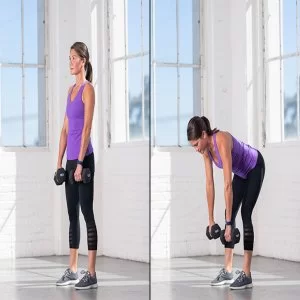
Standing chest stretch:
How to do:
- Stand upright facing toward the wall.
- Now place your one hand on a wall(palm facing the wall), the elbow should be extended.
- Now take a twist on your hanging hand.
- Twist your torso without moving your legs.
- It gives you a backstretch, hold this turn for 15-20 seconds and release.
- Perform this on the opposite side.
Seated spinal stretch:
How to do:
- Sit on a chair with your back straight.
- Your feet touching the ground and your hands hanging by your sides.
- Now take a twist on either side by moving your hands.
- Twist without moving your legs, they should be touching the floor.
- Hold this turn for 15-30 seconds and do it on your opposite side.
- Perform 4-5 repetitions on each side.
Bird-Dog pose:
How to do:
- Start with the hands and knees on the floor, making sure that the shoulders are above the hands, and the hips are above the knees.
- Tighten the abdominal muscles and raise one arm straight forward at shoulder level.
- Raise and extend the opposite leg straight out from the hip.
- Tighten the muscles and hold this position for10-15 seconds.
- Back to the beginning position and repeat with the opposite arm and leg.
- Perform 4-5 repetitions on each side.
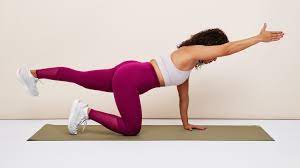
Poodle tail lower back stretch:
How to do:
- Start on hands and knees with a flat back(tabletop position)
- The shoulders are above the elbows, and the hips are above the knees.
- Sway both hips to the left side and bend your head to look at your left hip.
- Back to center. Sway both hips to the right side and move your head to look at your right hip.
- Continue to alternate sides for 8-10 repetitions.
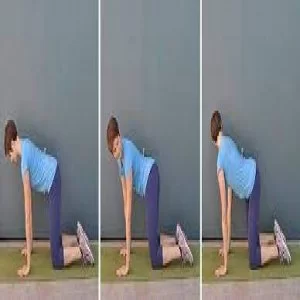
Open Book Stretch:
How to do:
- Start by lying on your left side with the knees bent and stacked, and the arms straight from the chest.
- Maintain the hips and knees in a stable position as you rotate the upper back, reaching the right arm to the ceiling.
- Continue to rotate so that the chest opens and the right arm reaches towards the floor.
- Hold for 8-10 seconds before closing the arms to return to the starting position.
- Repeat for 3-5 repetitions before switching sides.
Safety and precautions during low back muscle stretch:
- Stretch carefully and slowly only to the point of mild tension, not to the spot of pain.
- Hold each stretch for 15- 20 seconds. Don’t bounce!
- Never hold your breath. breathe in deeply before a stretch and breath out during the stretch.
- Stretch the lower back muscle with safety and concern. Be gentle and careful if you have any kind of injury or health problem. It’s good to consult with your doctor first before beginning any new types of exercise.
- You can perform these stretches one or two times a day. But if the pain gets bad, or you feel very sore, take a day off from stretching.
- Be aware of your body’s limits and don’t push your body to perform stretches too much. Listen to your body and do what feels greatest for you in every moment.
- As you do these stretches, take your time and take note of your breathing. Use your breath as a lead to make sure you don’t stress or overdo it. You should be able to breathe comfortably throughout each pose or stretch.
- These exercises are focused to relieve not causing lower back pain, so be aware when moving and stop immediately if you feel shooting pains. If you do feel lower back pain when stretching, once you start again, gradually work your way up to the previous motions.
When you should avoid low back muscle stretching:
- If your pain gets worse after stretching
- Any recent surgery
- Any recent injury
- Infection
- Rheumatoid arthritis
- Osteoporosis
- Hypermobility
FAQ
Stretching relaxes and lengthens the muscles of your spinal region. While stretching your back is important for back pain relief and also relieves tension in the lower back region.
Stretch your lower back carefully and slowly, especially if you’re in pain, it’s best to consult your doctor before starting stretching. Hold each stretch for at least 10 seconds and 30 seconds or longer.
Try to focus on doing sets of exercises. For example, you can do 2 to 3 sets of stretching exercises. Do this 2 to 3 times a day. As you do regular stretching you should feel your range of movement improve.
Regular stretching helps protect your lower back by increasing flexibility and reducing the risk of injury.
You should avoid stretching any time you have acute muscle strain, acute ligament sprain, or nerve injury/damage.

